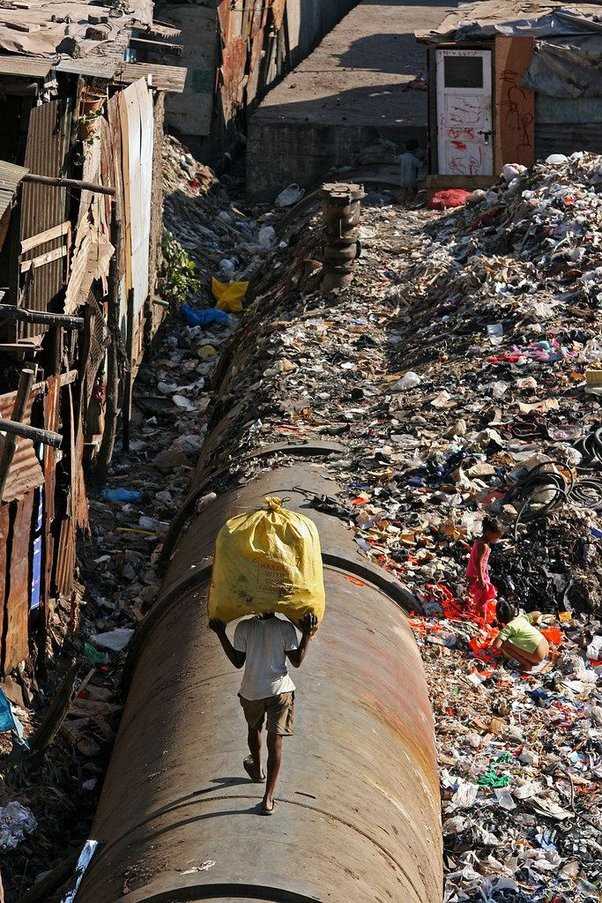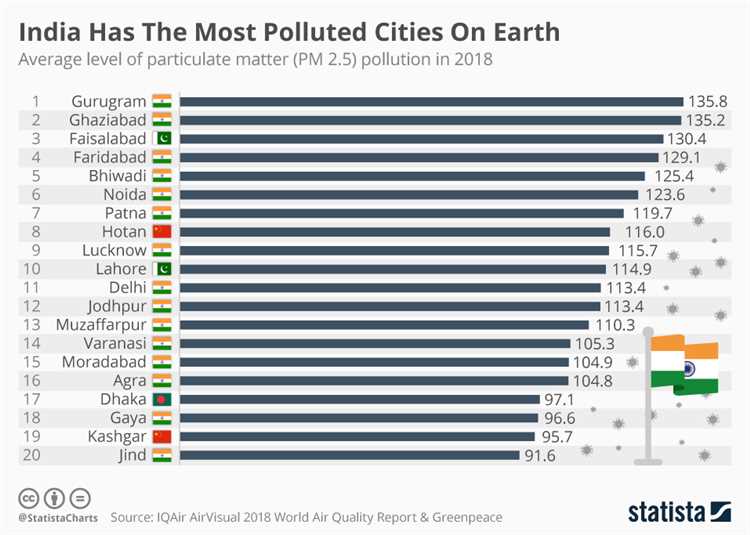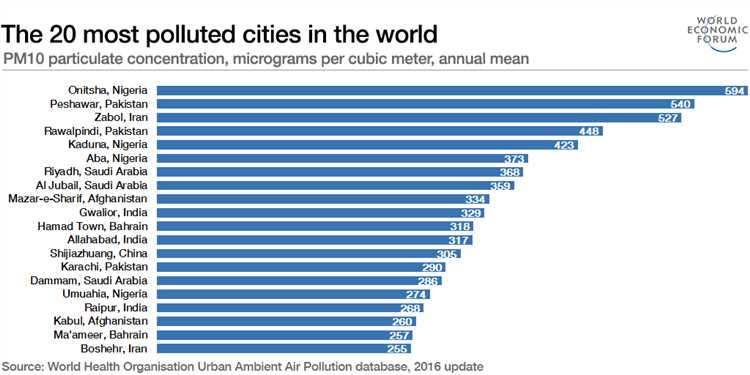
Have you ever wondered where the dirtiest city in the world is? Well, look no further. Welcome to the filthiest city on Earth, a place like no other, where garbage seems to have taken over the streets and pollution fills the air. Prepare yourself for an extraordinary journey through the dark side of urban living.
As you step into this city, a wave of unpleasant smells hits you right in the face. The stench of rotting garbage lingers in the air, while the sounds of car horns and sirens pierce through the constant buzz of people going about their day. It’s a chaotic symphony that can only be appreciated by those with a strong stomach.
But what makes this city so dirty? The answer lies in the overflowing landfills that seem to be everywhere you look. Mountains of decaying waste stretch as far as the eye can see, a testament to the consumption habits of the city’s residents. Plastic bottles, food wrappers, and discarded furniture pile up, creating an apocalyptic landscape that is both fascinating and terrifying.
But it’s not just the visible filth that makes this city so notorious. Air pollution is a major issue here, with thick smog engulfing the skyline. The city’s factories and power plants belch out smoke and toxic fumes, contributing to the city’s unbreathable air. Breathing in this toxic cocktail has become a way of life for the city’s inhabitants, who have learned to adapt to the harsh conditions.
- The Origins of Filth
- Poor Infrastructure
- Overcrowding
- Tracing the Historical Development
- Early Settlement and Growth
- The Rise of Pollution
- Causes of the Filth Epidemic
- Unveiling the Filthy Reality
- The Smell
- Piles of Trash
- Highlighted Filthy Locations
- Gutter Alley
- Garbage Mountain
- Impacts on the Environment
- Air Pollution
- Water Contamination
- Soil Degradation
- Efforts towards Cleanliness
- Public Awareness Campaigns
- Infrastructure Development
- Sustainable Solutions
- Q&A
- Why is the city considered the filthiest on earth?
- What are some of the main issues contributing to the city’s filthiness?
- How does the filth affect the city’s residents?
- Are there any initiatives or efforts to clean up the city?
- What are some potential long-term solutions to make the city cleaner?
The Origins of Filth
As the saying goes, “dirt never goes away”. Throughout history, cities have struggled with sanitation and cleanliness, leading to the emergence of some truly filthy places. The origins of filth can be traced back to various factors, including poor infrastructure, overcrowding, and a general lack of hygiene practices.
Poor Infrastructure
One of the main contributors to a city’s filthiness is its infrastructure. In many cases, cities with outdated or poorly designed sewer systems and waste management facilities face significant challenges when it comes to keeping the streets clean.
Historically, cities were not equipped to handle the growing population and the waste it produced. As a result, trash and sewage would often accumulate in the streets, creating an unsanitary and foul-smelling environment. This lack of proper infrastructure contributed to the spread of diseases and epidemics.
Overcrowding

Another factor that leads to the filthiness of cities is overcrowding. When a city’s population exceeds its capacity, the strain on resources and infrastructure increases dramatically. This can result in a lack of sanitation services and an inability to handle the sheer volume of waste produced by its residents.
In overcrowded cities, the streets can become littered with debris and garbage, making them breeding grounds for pests and disease-causing bacteria. The lack of personal space and public amenities also inhibits residents’ ability to maintain cleanliness, further contributing to the overall filthiness of the city.
| Factor | Description |
|---|---|
| Poor Infrastructure | Outdated or poorly designed sewer systems and waste management facilities |
| Overcrowding | Population exceeds capacity, strain on resources and infrastructure |
Tracing the Historical Development
The journey of discovering the filthiest city on Earth takes us back in time to trace the historical development that led to its current state. Understanding the factors that contributed to its status can provide valuable insights into the challenges faced by the city and the possible solutions that can be implemented.
Early Settlement and Growth
The filthiest city on Earth was not always in such a deplorable state. In fact, it began as a small settlement with a population of just a few hundred people. As time passed, however, the city experienced rapid growth due to various factors such as industrialization, immigration, and urbanization.
With the establishment of factories and the influx of workers seeking job opportunities, the population of the city exploded. The cityscape transformed, with the construction of numerous buildings and infrastructure to accommodate the growing number of residents.
The Rise of Pollution
As the industrial sector flourished, so did pollution. Factories emitted toxic gases into the atmosphere, contaminating the air and making it hazardous to breathe. Additionally, improper waste management systems and inadequate disposal methods resulted in the accumulation of waste, further contributing to the filthiness of the city.
The rapid urbanization also led to overcrowding and the strain on public services. Lack of proper sanitation facilities and the spread of diseases became prevalent, worsening the overall cleanliness of the city. The combination of these factors led to the city gaining its reputation as the filthiest city on Earth.
It is important to note that the historical development of the city does not solely lie in the actions of the past. The current state of the city is a result of ongoing challenges and the efforts (or lack thereof) to address them.
Exploring the historical development allows us to gain a deeper understanding of the issues faced by the filthiest city on Earth. By learning from the mistakes of the past and implementing effective solutions, it is possible to improve the current situation and create a cleaner and healthier environment.
Causes of the Filth Epidemic
With its pervasive stench and overwhelming heaps of garbage, the filth epidemic that engulfs the city can be attributed to several key causes.
1. Poor Waste Management: The city’s inadequate waste management system is one of the primary culprits behind the filth epidemic. Inefficient collection and disposal methods, limited recycling initiatives, and a lack of public awareness regarding proper waste disposal all contribute to the overwhelming accumulation of garbage.
2. Overpopulation: The city’s burgeoning population exacerbates the filth problem. With a sheer number of inhabitants, there is an increase in waste production, straining the already fragile waste management infrastructure.
3. Lack of Sanitation Facilities: Insufficient public sanitation facilities, such as public toilets and sewers, contribute to the filth epidemic. The absence of these facilities leads to unhygienic waste disposal practices and the proliferation of disease-causing agents.
4. Ineffective Government Regulations: Weak enforcement of sanitation and waste management regulations further perpetuates the filth epidemic. The lack of adherence to proper waste disposal regulations by both residents and businesses allows the problem to flourish.
5. Poverty and Lack of Education: Poverty and a lack of education hamper efforts to combat the filth epidemic. Limited access to resources and education on proper waste disposal methods contribute to the rampant pollution in the city.
6. Cultural Factors: Certain cultural practices and traditions may also contribute to the filth epidemic. In some cases, practices such as open-air defecation or burning waste contribute to the contamination of the city.
The combination of these factors has created a perfect storm, resulting in the filth epidemic that plagues the city. To address this crisis, it is essential to implement comprehensive waste management strategies, promote public awareness, and enforce strict sanitation regulations.
By taking decisive action, the city can work towards reclaiming its title as a clean and livable place for its residents.
Unveiling the Filthy Reality
As the world grapples with environmental issues and pollution, there is one city that stands out as the indisputable champion of filth: [city name]. Brace yourself as we uncover the sordid details that make this city the filthiest place on earth.
The Smell
Visiting [city name] means subjecting yourself to an assault on your olfactory senses. The stench that permeates the air is a mix of rotting garbage, human waste, and industrial pollution. It is a constant reminder of the city’s sheer filthiness.
Piles of Trash
One cannot escape the sight of mountains of garbage piled up in every nook and cranny of [city name]. The city’s overwhelmed waste management system has failed miserably, resulting in a landscape dotted with trash heaps, providing a breeding ground for rats, insects, and diseases.
[City name] has become a cautionary tale of what happens when a city neglects its responsibilities towards waste management.
Walking through the city streets is like navigating a gauntlet of discarded items. From empty bottles and plastic bags to decaying food and used needles, the filth is everywhere. It is disheartening to witness the disregard for cleanliness and sanitation.
This city’s infrastructure is crumbling, covered in layers of grime and dirt. Dilapidated buildings, overflowing sewage, and broken pavements add to the city’s overall atmosphere of neglect and decay.
So why has [city name] earned the title of the filthiest city on earth? The answer lies in the combination of neglectful waste management, significant pollution, and a complete lack of regard for cleanliness and environmental responsibility.
The filthiness of [city name] stands as a stark reminder that we need to prioritize the health of our planet and take action to prevent our cities from reaching such abominable levels of pollution and neglect.
Highlighted Filthy Locations
The filthiest city on earth is home to some truly repulsive locations that will make your stomach turn. If you have a strong constitution and a desire to explore the most revolting places on the planet, then these filthiest locations are a must-see for you.
Gutter Alley
Nestled in the heart of the city, Gutter Alley is a grimy backstreet that has earned its name. Overflowing with trash, sewage, and general filth, it is a place where only the daring venture. The stench alone is enough to make your eyes water, but the sight of humans and animals rummaging through the muck and mire is truly unforgettable.
Garbage Mountain
Rising like a dark monolith on the outskirts of the city, Garbage Mountain is the ultimate testament to the city’s filth. This mountainous pile of waste towers over the landscape, emitting toxic fumes and attracting swarms of flies and vermin. The constant rumbling of bulldozers and the sight of scavengers picking through the garbage is a shocking reminder of the city’s disregard for cleanliness.
No visit to the filthiest city on earth would be complete without witnessing these shocking locations firsthand. Just be sure to bring a strong stomach and a sense of adventure.
Impacts on the Environment
The filthiest city on Earth has a range of negative impacts on the environment. The pollution and waste generated in this city contribute to air, water, and soil contamination, leading to severe environmental degradation.
Air Pollution
The high level of industrial activity and poorly regulated emissions in the city result in significant air pollution. The release of harmful gases, such as carbon monoxide, sulfur dioxide, and nitrogen oxide, leads to the formation of smog and contributes to respiratory problems among the city’s inhabitants. The polluted air also affects the surrounding areas, further deteriorating air quality and impacting ecosystems.
Water Contamination

The filthiest city on Earth also suffers from widespread water contamination. Industrial waste, sewage, and other forms of pollution are regularly dumped into water bodies, making them unfit for human consumption and detrimental to aquatic life. The contaminated water also seeps into the groundwater, posing serious health risks to the residents who rely on it.
In addition, the city’s poor waste management system results in garbage and solid waste polluting rivers and waterways, further exacerbating the water contamination issues.
The severe water pollution not only affects the residents but also has far-reaching consequences for the entire ecosystem of the city and its surrounding areas.
Soil Degradation
The rampant pollution and waste disposal practices in the filthiest city on Earth also lead to soil degradation. Hazardous chemicals from industrial waste seep into the soil, rendering it infertile and unfit for agriculture. The contaminated soil also poses health risks to those who come into contact with it, further perpetuating the cycle of environmental degradation.
In conclusion, the filthiest city on Earth bears significant impacts on the environment. The pollution and waste generated contribute to air pollution, water contamination, and soil degradation. Urgent measures and stricter regulations are required to address these environmental issues and restore the city’s ecological balance.
Efforts towards Cleanliness
Despite being known as the filthiest city on earth, there have been various efforts made towards cleanliness in [city name]. The city’s government, along with local organizations and concerned citizens, have joined forces to tackle the monumental task of improving its sanitation conditions.
Public Awareness Campaigns
One of the key approaches taken to address the cleanliness issue is through public awareness campaigns. The government and local organizations have launched extensive campaigns to educate residents on the importance of cleanliness and proper waste management. These campaigns include distributing informational pamphlets, organizing workshops, and conducting door-to-door visits to households, urging them to maintain hygiene and cleanliness.
These efforts have resulted in increased awareness among the residents, emphasizing the need to keep the city clean and discard waste responsibly.
Infrastructure Development
Recognizing the necessity for improved infrastructure, the city administration has implemented various development projects aimed at enhancing the cleanliness of [city name]. These include the construction of waste management facilities, such as modern landfills and recycling centers. Additionally, the government has invested in upgrading the existing sewage systems and improving the water treatment plants to ensure proper disposal of waste and prevent contamination of water sources.
Furthermore, the city has initiated road and street cleaning programs, employing sweepers and sanitation workers to maintain cleanliness in public areas and thoroughfares.
All these infrastructural developments play a crucial role in transforming [city name] into a cleaner and healthier environment for its residents and visitors.
Sustainable Solutions
Despite its reputation as the filthiest city on Earth, tackling pollution and finding sustainable solutions is a top priority. The city has implemented several initiatives to address the environmental issues and promote a cleaner and healthier environment for its residents.
One of the main sustainable solutions is the promotion of recycling and waste management. The city has set up recycling centers throughout its neighborhoods and encourages residents to separate their waste into different categories. This helps to reduce landfill waste and promotes the reuse of materials.
Another important step towards sustainability is the implementation of renewable energy sources. The city has invested in solar and wind energy projects to reduce its dependence on fossil fuels. By harnessing the power of the sun and wind, the city aims to decrease its carbon footprint and promote a cleaner energy future.
Additionally, the city has prioritized the development of public transportation infrastructure. By improving public transportation options, the city aims to reduce the number of private vehicles on the roads, thus decreasing air pollution. The introduction of electric buses and trains further contributes to the city’s efforts to become more sustainable.
Furthermore, the city government has worked closely with industries and businesses to enforce stricter environmental regulations. This includes setting emission reduction targets and implementing regulations to control industrial waste and pollution. By holding businesses accountable for their environmental impact, the city aims to create a cleaner and healthier living environment for its residents.
Education and awareness also play a crucial role in the city’s sustainable solutions. The city has launched campaigns and programs to educate residents about the importance of environmental conservation and the impact of their daily actions. By promoting environmental consciousness, the city hopes to create a culture of sustainability and inspire individuals to make environmentally friendly choices.
In conclusion, despite being known as the filthiest city on Earth, this city is actively working towards sustainable solutions. Through initiatives such as recycling, renewable energy, improved public transportation, stricter regulations, and education, the city is committed to turning its reputation around and creating a cleaner and healthier future for its residents.
Q&A
Why is the city considered the filthiest on earth?
The city is considered the filthiest on earth due to its extremely poor sanitation, widespread pollution, and lack of waste management systems.
What are some of the main issues contributing to the city’s filthiness?
Some of the main issues contributing to the city’s filthiness include inadequate sewage systems, improper waste disposal, and polluted water sources.
How does the filth affect the city’s residents?
The filth affects the city’s residents by causing various health problems, such as respiratory diseases, infections, and waterborne illnesses. It also decreases the overall quality of life in the city.
Are there any initiatives or efforts to clean up the city?
Yes, there are some initiatives and efforts to clean up the city. These include public awareness campaigns, government-funded projects for sanitation improvement, and the involvement of non-profit organizations in waste management programs.
What are some potential long-term solutions to make the city cleaner?
Some potential long-term solutions to make the city cleaner include implementing proper waste management systems, improving sewage infrastructure, enforcing stricter environmental regulations, and promoting sustainable practices among the residents.